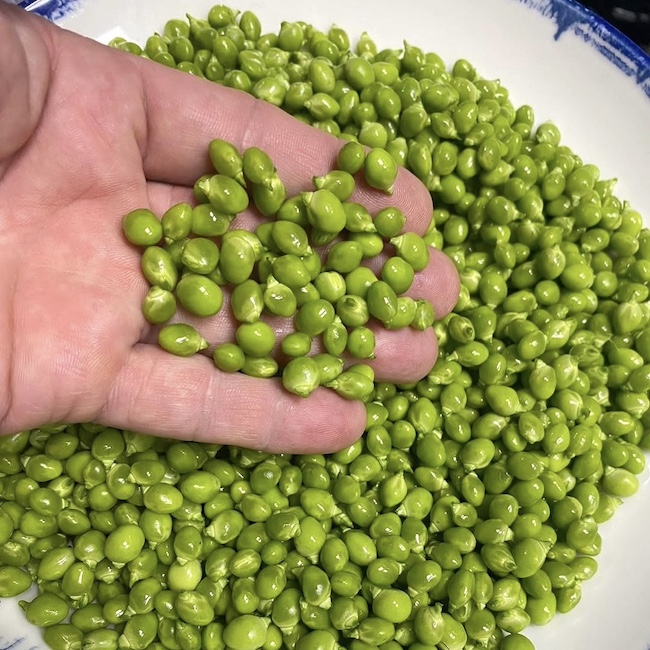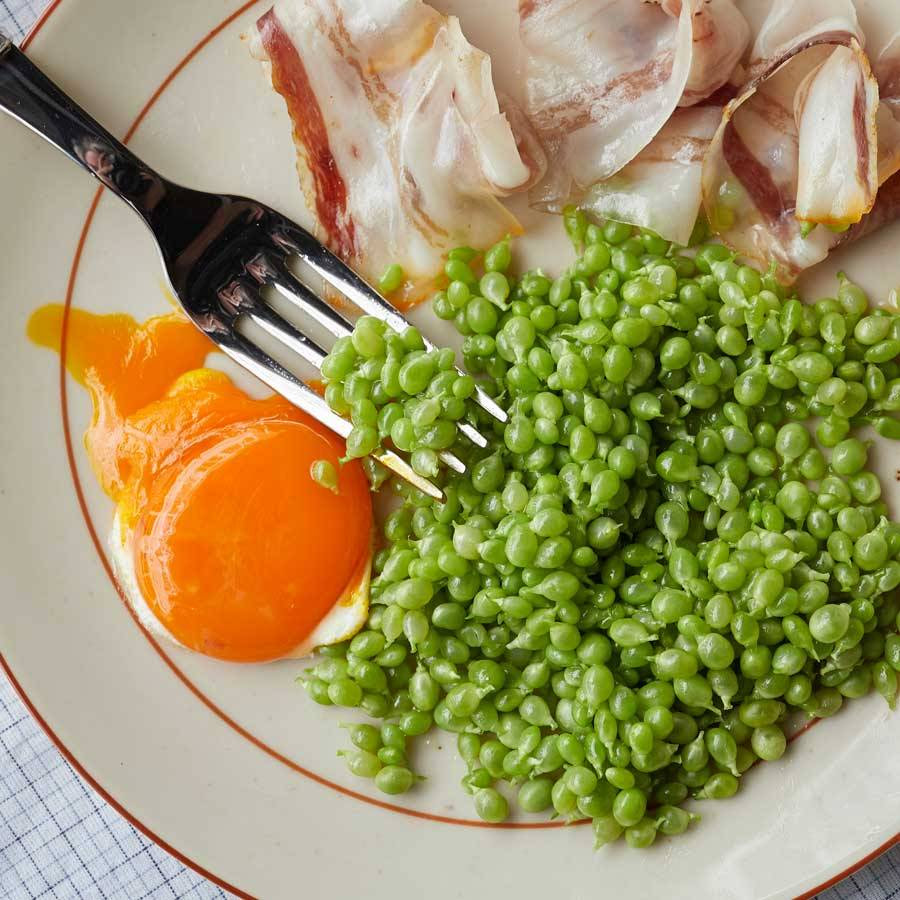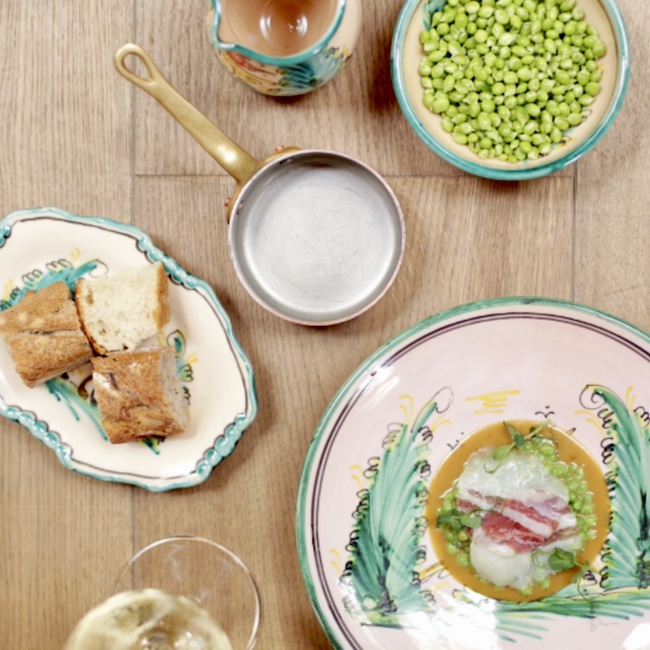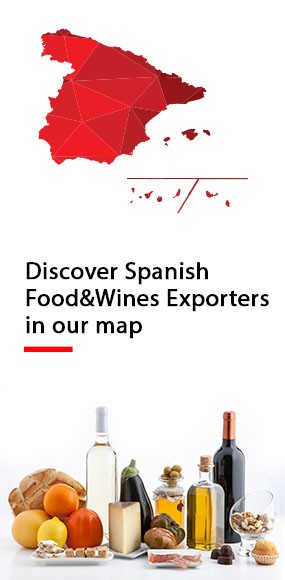.png.transform/rendition-xs/image_image%20(1).png)
A True Jewel: 'Guisantes Lágrima’
Called vegetable caviar, tear peas are one of Spain's gastronomic gems: an object of desire that explodes in your mouth
Sometimes, to highlight the value of a product, it is compared to another even when it isn’t necessary. This happens with the guisante lágrima (tear pea), which is often labeled as "vegetable caviar." But it doesn’t need to be associated with sturgeon roe. Perhaps at first, but now it has become a star product—a jewel of Spanish agriculture that surprises everyone who tries it. Green, small and, above all, extremely surprising!
The guisante lágrima is named after its shape, which is not as round as that of common peas. That’s the key: while it shares the scientific name Pisum sativum with regular peas, what sets it apart is the harvesting process, which takes place when the fruit is still immature. This gives the guisante lágrima its unique texture and flavor.

Where to find it
Traditionally, there were are only two places in Spain where this gastronomic gem is grown. One is in the Basque Country, in the province of Guipúzcoa. It is cultivated along the coastline of Getaria, on cliffs overlooking the sea. It is typically planted in autumn, around October, and harvested about three weeks later when the fruit is still immature. The harvesting is done very early in the morning to avoid direct sunlight on the plant, and the peas are shelled by hand. This meticulous process helps preserve all the qualities that make it such a special—and expensive—product.
Aside from this area, the guisante lágrima is also grown along the coastal region of Maresme in the province of Barcelona. The nerve center of this production is the town of Sant Andreu de Llavaneres, where cultivating these green pearls has traditionally been a source of livelihood for the local people. Plants reaching up to two meters in height thrive in siliceous and sandy soils, which retain moisture and eliminate the need for irrigation until later in the season. Once again, the mild climate favors the growth of this exceptional pea.
In recent years, a third region has joined these two areas. Located in Galicia, it has successfully made the cultivation of guisante lágrima possible thanks to a collaborative effort between farmers, the two-Michelin-star restaurant Culler de Pau, and the Spanish National Research Council (CSIC). The variety, called Bagoa Atlantic, has been cultivated experimentally at a vocational training center in Pontevedra using local strains.

An Extremely Short Season That Makes It a Rare Gem for Chefs
With a pea like this, where timing is everything, its season is inevitably short. The Guipúzcoa variety is typically available between January and February, followed by the Maresme variety, which extends availability by another two months. The Galician variety, although still very limited, is also harvested in spring—150 days after being sown in late autumn and early winter.
Something that all production areas share is a common characteristic: their small size, due to incomplete maturation. The best way to prepare them to fully appreciate their flavor is to cook them very lightly, regardless of the cooking method, leaving them almost raw. Only this way does their delicate nature remain intact. In the mouth, they burst like tiny fireworks, with a crisp and perfect outer layer that gives way to an explosion of flavor, where vegetal notes blend with a subtle sweetness. A remarkable experience that almost feels like an elaborate creation from elBulli, when in reality, it is a perfect form granted by nature itself.

Two passionate advocates of this pea are the Torres brothers, Sergio and Javier, who run the three-Michelin-starred Hermanos Torres restaurant in Barcelona. They consider guisante lágrima one of their signature ingredients, using the “floreta” variety. In one of their dishes, they lightly sauté the peas before reducing them with a poultry broth and serving them with an ibérico ham sauce. To complete the dish, they also incorporate pea shoots and flowers.
José Carlos Fuentes, chef of Aldana and Señor Pepe (both in Madrid) and formerly of Sant Pau (Tokyo), where he earned two Michelin stars for chef Carme Ruscalleda, is also passionate about this ingredient. He serves them with a delicate free-range chicken broth, adding Iberian pork in the form of pancetta and using egg yolk to provide a touch of creaminess.
Due to its delicate and fragile nature, the guisante lágrima does not travel well. This means that its already scarce production (only 90 grams of peas are obtained per kilo of pods) mostly remains in high-end restaurants in Spain and France. In addition to the previously mentioned chefs, Josean Alija serves them grilled with a squid ink-based black sauce at Nerua (Bilbao, Basque Country). Meanwhile, Andoni Luis Aduriz at Mugaritz (two Michelin stars in San Sebastián) has featured them raw, covered with a gelatinous veil of ginger and chives.
Not only is the tear pea fascinating from a culinary perspective, but it is also highly notable in terms of nutrition. Its fat content is minimal, and it is rich in proteins and carbohydrates. Additionally, it contains fiber, vitamin C, and minerals such as magnesium and phosphorus. It also has a significantly higher proportion of vitamin B12 than other legumes, making it particularly interesting for vegetarians and vegans as a dietary supplement.
A green temptation—limited and exclusive—that captivates gourmets around the world.

